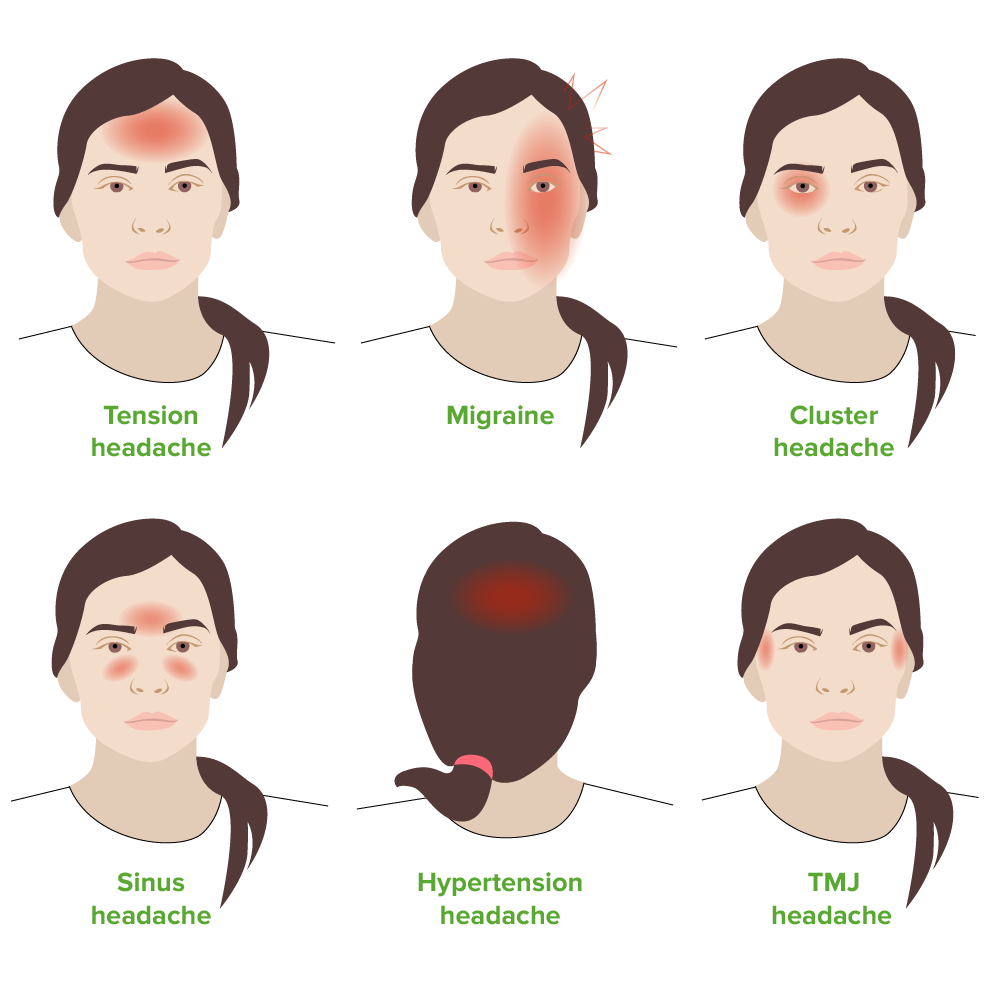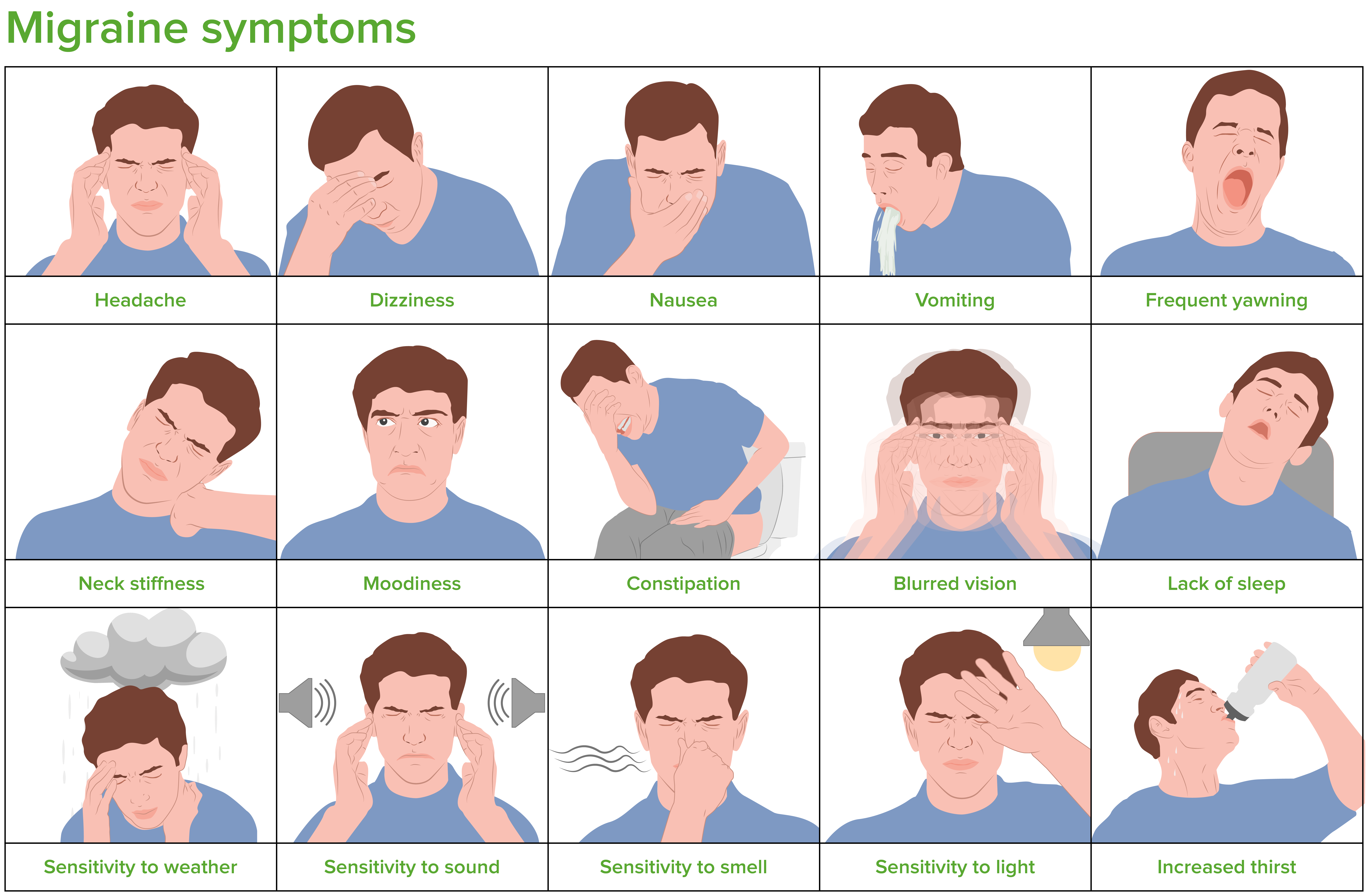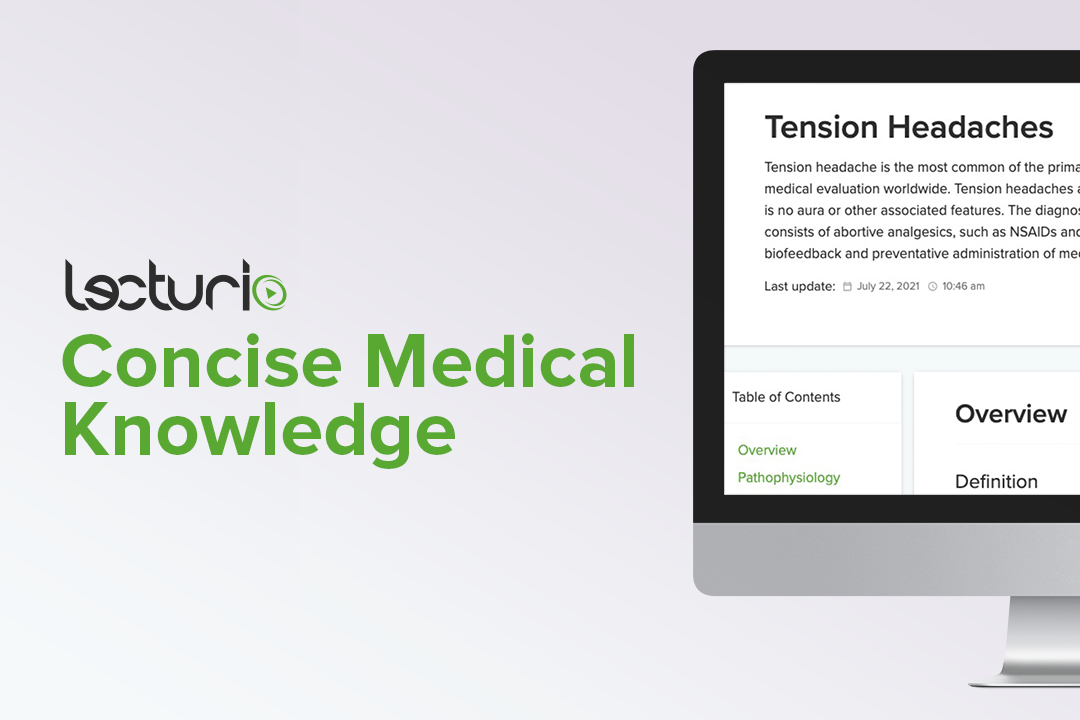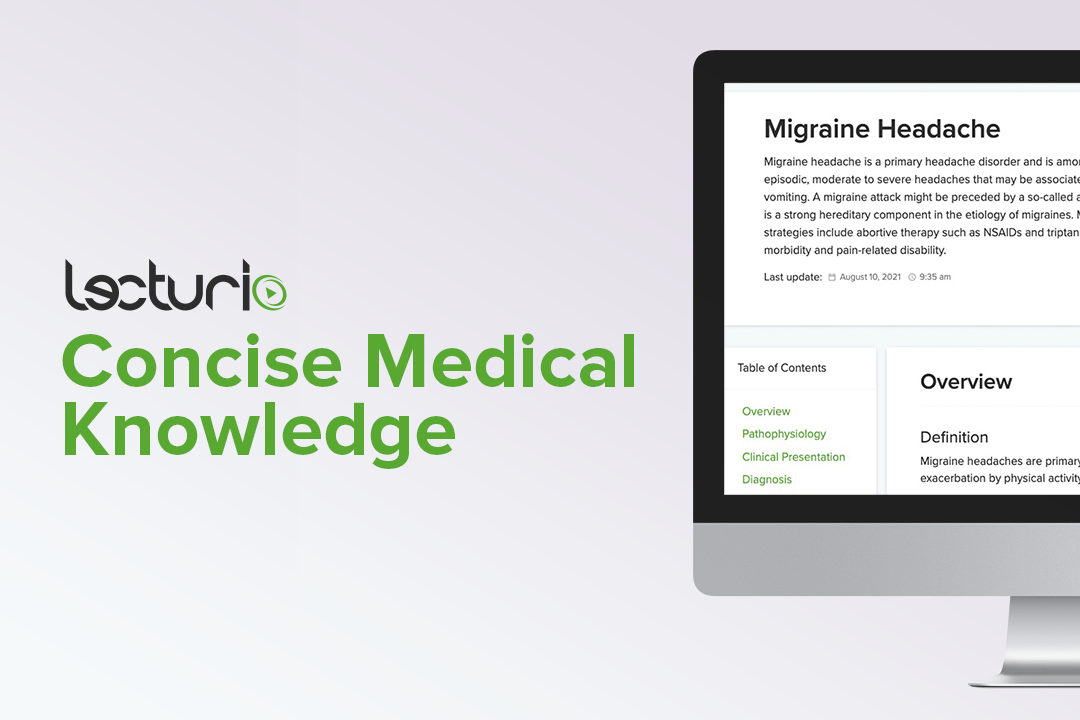Playlist
Show Playlist
Hide Playlist
Secondary Headache in Children
-
Slides MigrainesandHeadaches Pediatrics.pdf
-
Download Lecture Overview
00:01 So, we might also might be seeing patients with headaches and it could be a secondary headache. 00:06 In other words, it could be from another problem. 00:09 And we have to worry about that in patients. 00:12 One possibility is intercranial infection. 00:16 Meningitis of course can cause headaches. 00:18 and typically, what is distinguishing about that is they will have fever. 00:22 And they will be unwilling or unlikely to be able to put their head down and touch their chin to their chest. 00:29 Increased intercranial pressure can cause headache. 00:33 One way to remember things that can cause intercranial pressure are remembering all the tissues that are inside the skull and what if there is more of them. 00:42 So, for example, a tumor can cause headache. 00:45 A mass of brain tissue will expand and increase the ICP. 00:50 Typically those patients will have morning headaches and that is a key historical point. 00:55 They should be having headaches in the morning and also vomiting. 01:00 That happens because as they are lying down through the course of the night, the pressure starts to accrue. Standing up, it is relieved simply through drainers through the Foramen magnum. 01:09 Other examples of fluid would be Increased brain fluid or CSF. 01:13 This happens of course with patients with hydrocephalus, who can develop headache. 01:18 A patient with a shunt, who has shunt malfunction will usually present with headache. 01:23 or blood. 01:25 Blood is also in the brain and if it accrues as a bleed either through trauma or a raptured aneurysm, that can cause a profound headache. 01:33 Remember Cushing's triad. 01:36 Cushing's triad is hypertension, bradycardia, and abnormal breathing. And if we see that, that is actually a very late finding. 01:45 in patients with increased intercranial pressure. 01:51 So, a headache diary can help. 01:53 If the patient is coming in with regular headaches, and you ask them to keep a diary of when those headaches are happening, and you note morning headaches, consider a mass. 02:05 One last common cause of headaches is actually abusing the medicines we use to treat headaches. 02:12 This sounds strange but it is exceptionally common. 02:15 And it is particularly true of NSAIDS like Ibuprofen. 02:18 If the patient is having frequent cluster headaches or tension headaches or migraines, and they find themselves taking a lot of Ibuprofen, it can be that the Ibuprofen itself is causing a headache. 02:32 This can be challenging to treat because what we need to do is actually remove them from the Ibuprofen and in many times have them suffer through their baseline headaches before those headaches will start to resolve from the Ibuprofen chronic use. 02:50 So, there are several historical clues that you can use to tip you over the edge and say, this maybe a headache that is more substantially something going wrong as supposed to one of the typical headaches types. 03:02 Like I said, morning or nocturnal headaches should absolutely be concerning to you. 03:07 As a sign for increased intercranialpressure. 03:10 Morning vomiting is concerning. 03:12 Severe pain at the onset of a headache a thunderclap headache maybe an indicative of AVM, or aneurysm. 03:21 But please remember in children, it is exceptionally rare an AVM or an aneurysm. That is much more common in adults. 03:28 So, the worst headache of life scenario is rarely actually an aneurysm in adolescence. 03:36 A fixed location or an occipital location to a headache is usually a sign of intercrania pathology. 03:43 Headache in a child with a VP shunt is always an emergency. 03:49 It is entirely possible that that child can have an obstruction of their shunt. 03:53 And that child needs to be evaluated. 03:55 If the headache is particularly bad, we'll obtain a shunt series a series of x-rays looking at the integrity of the shunt and even might need to look at the size of the ventricles. 04:06 In the past, we use CT scans to look at the size of the ventricles, but now we can use a rapid MRI in many centers that can avoid radiation in these patients. 04:17 If a patient has lethargy or confusion, that is a sign that there might be a problem that is more substantial than just a headache. 04:24 Although do remember, sometimes complex migraines can have complicated symptoms. 04:31 Any vomiting in a setting of a headache is probably more than just a headache. 04:36 And of course if a patient is having a headache before a seizure, then that may be a sign that there is something more significantly going on than just a headache and that there maybe an intercranial pathology going on. 04:50 There are certain physical exam clues that may tip you off that this headache is something organic and a specific problem is triggering the headache as opposed to this being a headache syndrome. 05:01 One is again that's the Cushing's triad. Hypertension and bradycardia that is good for a test. 05:08 But in reality these patients are very sick before Cushing's triad shows up. 05:13 Until very late finding in ICP. 05:16 These patients will usually have altered mental status and other things. 05:20 Papilledema is a finding that you can get better at seeing if you practice your fundoscopic exam. 05:27 Papilledema is a sign of intercranial pressure. 05:30 And we've seen it many times in patients with headaches as result of increased ICP. 05:36 Nuchal ridigity is a sign of meningitis. And If the patient has nuchal rigidity, you need to worry about meningitis. 05:45 Cranial nerve palsy is common in certain conditions that can present with headache. 05:50 The classic one on the east coast of the United States is Lyme disease. 05:55 Patients with Lyme disease may well have headache or frank meningitis and they often can present with a seventh cranial nerve palsy. 06:04 A focal neurologic exam is probably a sign that a patient has an intercranial pathology and requires further investigation. 06:14 Ash leaf spots are an early sign of tuberous sclerosis. 06:19 There will be another lecture about tuberous sclerosis but patients with tuberous sclerosis can develop tubers in the brain which could cause increased ICP or other problems that could be consistent with tuberous sclerosis and this disease can present with headaches. 06:36 Lastly, if a patient has macrocephaly, those headaches are probably from increased ICP. 06:42 We track head circumference in children. 06:44 But it is important for any child who is presenting with a neurologic complaint to have their head circumference measured and plotted. 06:51 Any child who has an increase in head circumference needs to be evaluated for intercranial pathology. 06:58 That's everything I have today for you on headaches and migraines Thanks for your attention.
About the Lecture
The lecture Secondary Headache in Children by Brian Alverson, MD is from the course Pediatric Neurology. It contains the following chapters:
- Secondary Headache
- Finidings that Should Worry You
Included Quiz Questions
While examining a patient complaining of headache you notice that she has ash leaf spots and a bumpy rash on her face. What is the most likely diagnosis?
- Tuberous sclerosis
- Neurofibromatosis type 1
- Neurofibromatosis type 2
- Sturge-Webber syndrome
- Rosacea headaches
A 12-year-old child is brought in by her mother complaining of headaches that have been progressively worsening for the past month. She is unable to give further details. Which is the next best step?
- Ask the child/mother to keep a headache diary.
- Refer to a neurosurgeon for evaluation
- Order an MRI head stat
- Prescribe ibuprofen daily
- Reassure the child and mother as it is a benign headache
Which of the following is NOT a feature of increased intracranial pressure?
- Scalp tenderness
- Hypertension
- Bradycardia
- Irregular breathing
- Headache
During the physical examination, which of the following findings would indicate further evaluation of a patient with a headache?
- Papilledema
- Pallor
- Hypotension
- Excessive lacrimation
- Bradycardia
A 5-year-child is brought to the ER by his parents complaining of a headache. The parents indicate the child has been feverish, irritable, and "not as active" for the past 2 days. The physical exam reveals the child is unable to bend his neck and bring his chin to his chest. Which of the following is the most likely diagnosis?
- Meningitis
- A space-occupying lesion in the head
- Hydrocephalus
- Tension headache
- Migraine
Increased systolic blood pressure, decreased heart rate, and abnormal breathing, along with an early morning headache, are most likely indicative of which condition?
- Increased intracranial pressure
- No intracranial pathology
- Essential hypertension
- Over-dosage of ibuprofen
- Extradural hemorrhage
Which of the following conditions presents with a "thunderclap" headache?
- AVM or aneurysm
- Hyperthyroidism
- Brain tumor
- Meningitis
- Tuberous sclerosis
Customer reviews
4,0 of 5 stars
| 5 Stars |
|
0 |
| 4 Stars |
|
1 |
| 3 Stars |
|
0 |
| 2 Stars |
|
0 |
| 1 Star |
|
0 |
As usual, Dr. Alverson is able to bring to the lecture the most relevant elements needed for the daily practice.









